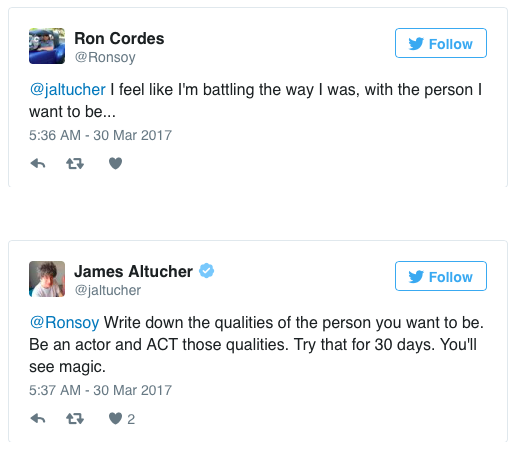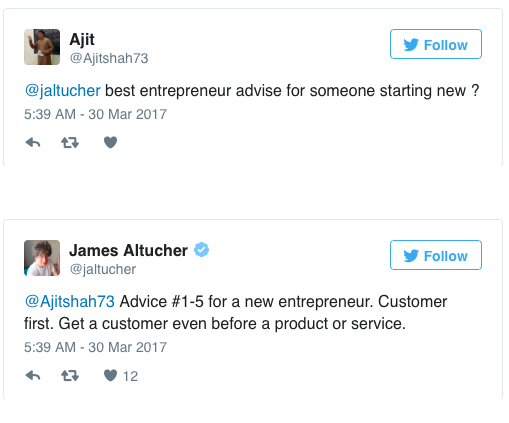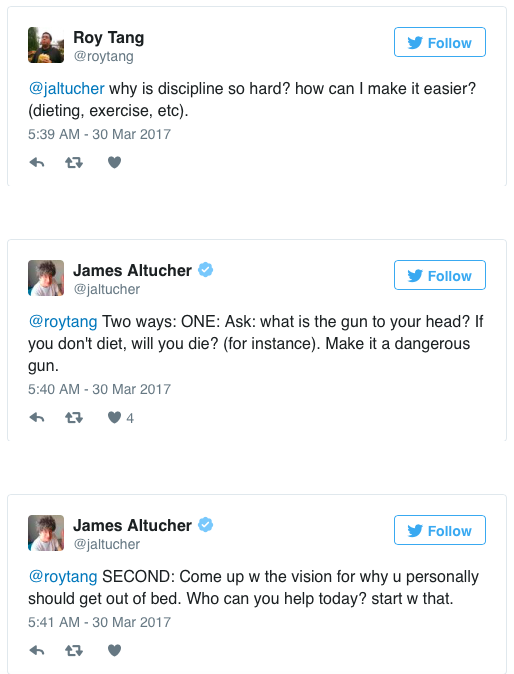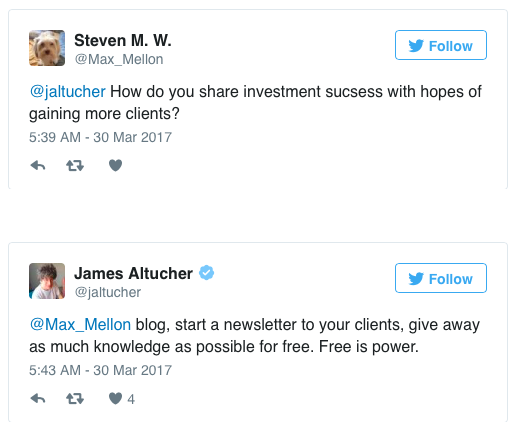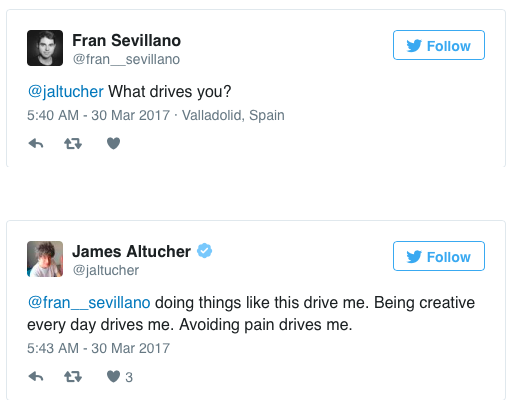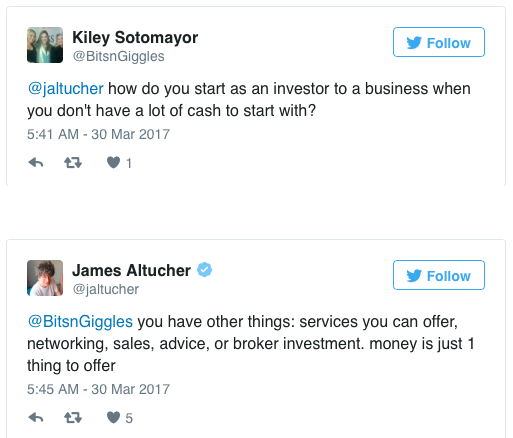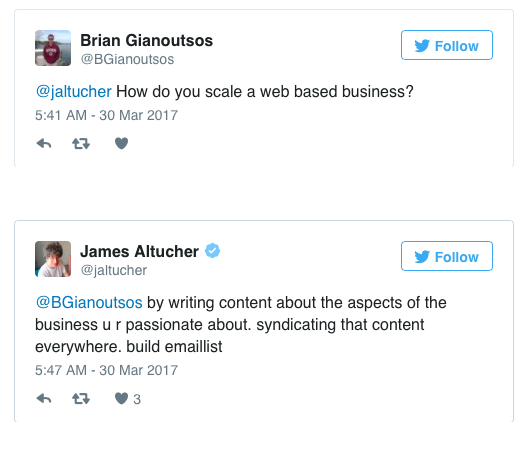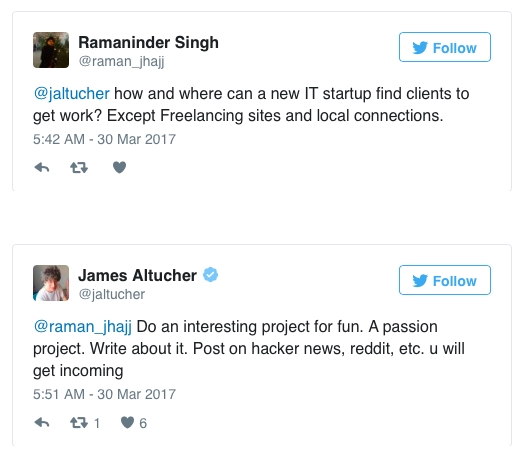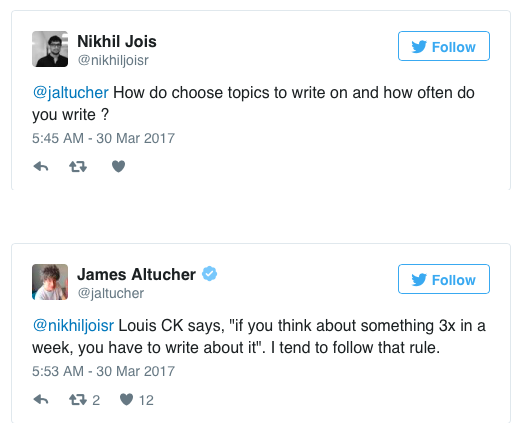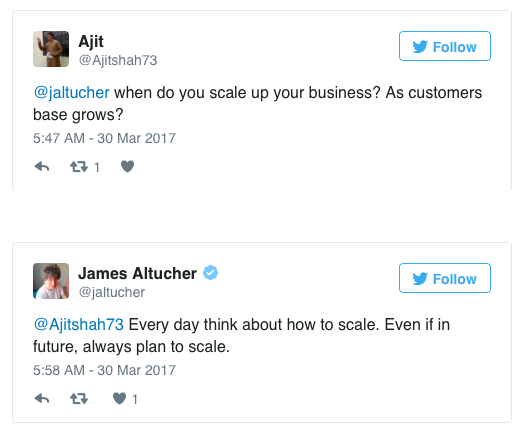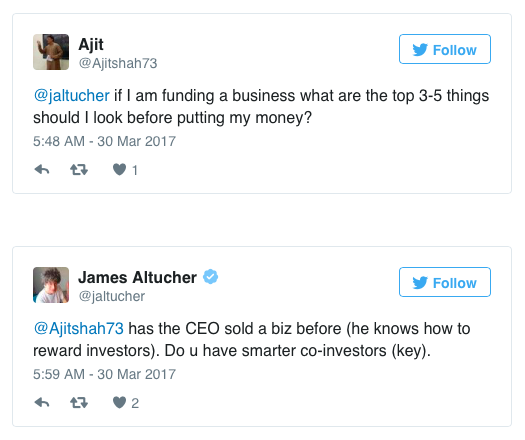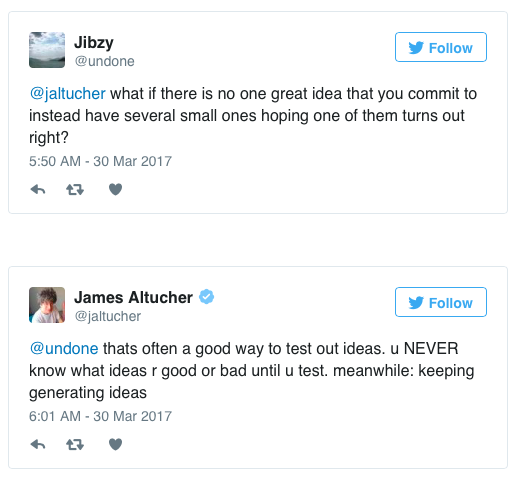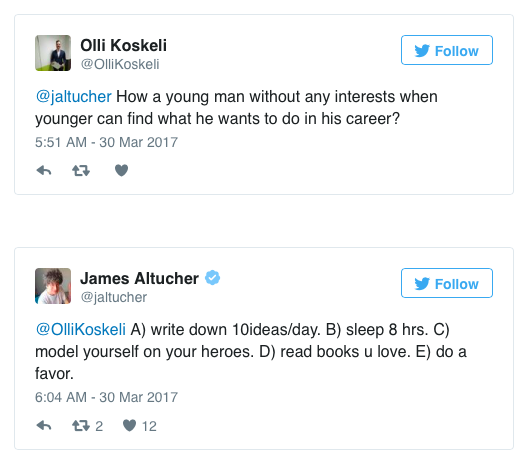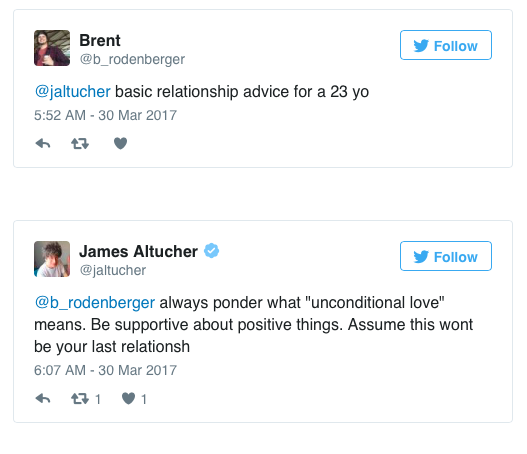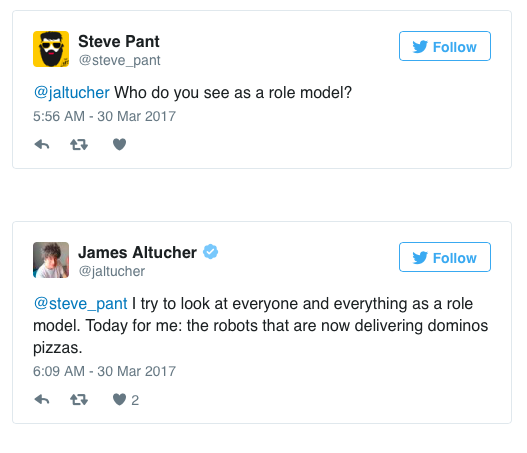| In this week's Abundance Insider: Burger-flipping robots, lip-reading authentication algorithms and new graphene-like materials made from 3D printed bacteria. Cheers, P.S. Send any tips to our team by clicking here, and send your friends and family to this link to subscribe to Abundance Insider. Burger-Flipping Robot Replaces Humans On First Day At Work What it is: A robotic kitchen assistant named Flippy developed by Miso Robotics recently completed its first day of cooking burgers at the CaliBurger fast food chain. The AI software was built for adaptability, so it can be trained to help with other mundane, dirty or dangerous tasks in commercial kitchens. The robot's onboard cameras and sensors help the robot determine when the burger is ready to place on a bun and hand off to a human worker to add condiments. Miso Robotics aims to install Flippy robots in 50 restaurants by the end of 2019. Why it's important: One of the top five anticipated robotics breakthroughs in the next two years mentioned by Rethink Robotics CTO Rodney Brooks is the widespread availability and uptake of collaborative robots -- robots designed to safely assist and augment humans in executing specific tasks. Similar to Rethink Robotics' Baxter robot featured in last week's Abundance Insider, Flippy is an excellent example of how robotics, sensors and AI will transform the quick-service and fast food industry segments. Join the Discussion Spotted by Aryadeep S. Acharya / Written by Sydney Fulkerson Oleo Sponge Invented at Argonne National Laboratory Can Sop Up Oil in a Spill What it is: Researchers from the Argonne National Laboratory developed a polyurethane foam-based sponge that can collect oil from bodies of water. The interior surface of the sponge uses its oleophilic molecules to draw oil out of water -- and to ensure the oil molecules stuck to the sponge, researchers infused metal oxide with nanostructures to act as a primer. As a result of this technique, the sponge can absorb up to 90 times its weight in oil, and can even be used again after the oil is wrung out. Argonne is actively seeking a licensing or collaboration agreement to commercialize and market the material in under five years. Why it's important: Today's oil spill cleanup methods present a myriad of issues when removing oil from beneath the water's surface. Instead of having to use chemicals in the water in trickier removal situations, the durability and multi-use nature of the Oleo sponge could be the clean, efficient solution to fight devastating spills. The application of these novel materials could greatly improve harbor maintenance and oil spill response in the future. Join the Discussion Spotted by Steve Pierz / Written by Sydney Fulkerson Cars Could Soon Be Running On BioFuels Derived From Wastewater What it is: Water management company Aqualia and a car manufacturer called SEAT are working together on a project called Life Metha-morphosis, which aims to create a sustainable fuel from treated organic waste that can power compressed natural gas (CNG) cars. The primary focus is producing biomethane, a biofuel that we've already seen power homes and buses. Using a process called anaerobic digestion (AD), bacteria break down solid waste from the water to convert it into collectable biomethane. Two prototypes are currently being built for this task -- UMBRELLA, which will be installed at a sewage treatment plant in Barcelona, and METHAGRO, which will operate at a plant dealing with animal manure. The team believes a mid-sized plant could treat about 10,000 cubic meters of wastewater per day to create 1,000 cubic meters of biomethane -- which would be enough fuel for 150 vehicles traveling 62 miles a day. Why it's important: Evidence of the energy breakthroughs enabled by the convergence of experimentation, technology and deeper understanding of bacteria and biological processes. CO2 emissions from CNG cars would be cut by up to 80 percent as a result of running on biomethane compared to gasoline-powered cars. This project also bolsters Spain's contributions toward a future of abundant, efficient and renewable energy. Join the Discussion Spotted by Aryadeep S. Acharya / Written by Sydney Fulkerson Lip-Reading Computers Could Spell the End of Passwords as We Know Them What it is: Scientists from the Hong Kong Baptist University (HKBU) recently developed lip-reading software that may eventually be able to replace all typed or fingerprint-based passwords. The security software would ask the user to speak or mouth a password into a device's camera, and recognition software would grant access once it reads the user's lips. The team's lead scientist, Cheung Yiu-Ming, believes lip movement is more secure than biometric security (fingerprint authentication), as modern learning systems can accurately distinguish the difference between two people saying the same password. The lip-reading software received a U.S. patent in 2015, and may be available for use in the near future. Why it's important: As proven by LipNet's lipreading model, the future applications of lipreading AIs are profound. The initial use for this new lipreading software may be for login passwords, but it could also greatly improve other secure events, such as financial transactions made at an ATM. The forgotten passwords and "stolen" fingerprints of today could very well be replaced with the dynamic characteristics of our own lip motions. Join the Discussion Spotted by Aryadeep S. Acharya / Written by Sydney Fulkerson 3D-Printed Bacteria Could Make Bespoke Graphene-Like Materials What it is: Anne Meyer at the Delft University of Technology in the Netherlands has modified a 3D printer to print bacteria that consume graphene oxide. A cellular gel is printed onto a calcium ion layer, fixing the bacterium in place and creating precise configurations in circuits as the bacteria reduce the graphene. By making some areas conductive and others not, this could lead to circuit design or other novel configurations, creating many of the properties of graphene at a significantly lower cost. This method can also be applied to other materials, such as substances found in lunar dust, which researchers are already contemplating as a means of creating electronic circuits in space. (In fact, bacteria is already turning silica into silicon and iron oxide into iron in replica lunar soil.) Why it's important: We've written extensively about the strength, conductivity and flexibility of graphene; so far, however, it has been difficult to produce, requiring either extreme heat or powerful chemicals, which drives high costs and environmental hazards. This novel combination of 3D printing, biology, synthetic genomics and materials science illustrates the value in routinely looking for convergences in exponential technologies across disciplines and industries. Join the Discussion Spotted by Jason Goodwin / Written by Jason Goodwin Microsoft's Plan to Dominate Connected Cars What it is: Microsoft has licensed patents to Toyota, including tools to store and transfer files, artificial intelligence, cybersecurity, and technologies to predict when cars might need maintenance, anticipate routes based on calendars, and more. The move builds on an earlier partnership between Microsoft and Toyota, Toyota Connect, which is focused on bringing new tech to cars without overwhelming drivers and drives Toyota's research in AI and robotics. Why it's important: Whether simply Internet-connected or autonomous, cars have become a software-driven enterprise. All the major players, from Microsoft to Intel, Google, Qualcomm, NXP and more, are leveraging massive opportunities to provide hardware, software, and expand their current core offerings such as Azure and Skype. As an intermediary to fully autonomous vehicles, expect continued improvements in connectivity to change user behavior, which will ease the transition to an autonomous future. Join the Discussion Spotted by Jason Goodwin / Written by Jason Goodwin 'Redox Flow' Batteries Simultaneously Cool And Power Chips What it is: Researchers at ETH Zurich and IBM Research Zurich have built a new type of tiny redox flow battery that will supply tightly packed electronic components with energy. At just 1.5 mm thick, the chips can be stacked, saving space and energy, and supplied and cooled at the same time. The battery is also quite efficient, producing a record 1.4 watts per square centimeter. To address the challenge of creating an efficient structure for flow of the electrolyte while keeping pumping power low, researchers turned to 3D printing to create polymers and complexity at such small sizes. Why it's important: Cooling is a huge cost in data centers and electronics, due to the energy to run fans and A/C and the space requirements around chips and bare metal. Once perfected, look for this type of stackable chip to lead to smaller -- or at least more efficient -- data centers, and more powerful smartphones and wearables. Join the Discussion Spotted by Aryadeep S. Acharya / Written by Jason Goodwin Targeted Apoptosis of Senescent Cells Restores Tissue Homeostasis in Response to Chemotoxicity and Aging What it is: Due to acute stress and normal aging, some cells become damaged. Apoptosis normally removes them from the body, but some remain, becoming senescent, unable to divide but producing pro-inflammatory compounds that can accelerate aging. How senescent cells escape apoptosis is not yet entirely clear, but researchers here have added to that understanding and created a protein peptide capable of inhibiting the rexpression of FOXO4, a gene disproportionately expressed in sensescent cells. This neutralized the effects of chemotherapy (an acute stress), restored fur density, fitness, and renal function in fast-aging and naturally aging mice. Some mice were able to increase their distance runs by 200% to 300%. Why it's important: From stem cell treatments to organ replacements, early cancer detection, and therapies to remove cellular "junk" such as we see with this research, there are many parallel tracks working to extend the healthy human lifespan. As healthcare digitizes, this will accelerate even further; eventually, we'll see entirely new business models and new ways of thinking about healthcare. Join the Discussion Spotted by Espen Riskedal / Written by Jason Goodwin What is Abundance Insider?This email is a briefing of the week's most compelling, abundance-enabling tech developments, curated by Marissa Brassfield in preparation for Abundance 360 Want more conversations like this?At Abundance 360, Peter's 250-person executive mastermind, we teach the metatrends, implications and unfair advantages for entrepreneurs enabled by breakthroughs like those featured above. We're looking for CEOs and entrepreneurs who want to change the world. The program is highly selective. If you'd like to be considered, apply here. Know someone who would benefit from getting Abundance Insider? Send them to this link to sign up. If you wish to stop receiving our emails or change your subscription options, please Manage Your Subscription PHD Ventures , 800 Corporate Pointe, Suite 350, Culver City, CA 90230 |
Friday, March 31, 2017
Fwd: This Email Is Going To Be A Little Bit Different...
| ---------- Forwarded message ---------- From: James Altucher <customerservice@thealtucherreport.com> Date: Fri, Mar 31, 2017 at 9:06 AM Subject: This Email Is Going To Be A Little Bit Different... To: stevescott@techacq.com
Sent to: stevescott@techacq.com Unsubscribe Choose Yourself Media, 5500 Military Trail, Suite 22-250, Jupiter, FL 33458, United States |
Friday, March 24, 2017
Fwd: Abundance Insider: March 24 Edition
| In this week's Abundance Insider: Mind-reading robots, cutting-edge cryopreservation capabilities, and an AI that will save JPMorgan's lawyers 360,000 hours a year. Cheers, P.S. Exponential Manufacturing is now less than 60 days away, and Exponential Finance is less than 90. These two events will bring together global leaders to discover how the latest technologies are impacting manufacturing and finance, and will ensure each participant is prepared for the changes brought forth by unstoppable technological progress. Prices go up April 1st, so now is the time to take action, remove uncertainty and prepare for success in the year to come. Use code PHDATTEND for up to 15% savings on Exponential Manufacturing and Exponential Finance. Baxter the Robot Fixes Its Mistakes By Reading Your Mind What it is: Rethink Robotics' Baxter robot is helping human researchers develop techniques to communicate with robots on a less-awkward level. MIT roboticist Daniela Rus, co-author of this study, stated the goal for the research was to have the robot adapt to what the human would like to do. When humans notice a mistake, our brain emits an error-related potential signal. So when Baxter is about to make a mistake, the system translates these signals from the human's brain (which is connected to an EEG) into a code that Baxter understands. Researchers expect the current binary technology to expand across a range of detectable emotions in the future. Why it's important: Socializing robots has been one of the primary challenges thus far between human-robot interactions, yet it's a critical one to address. Just as we saw in last week's Insider, Virginia's legislation passed the country's first delivery robot law, and other states have already begun preparing for the emergence of robots among society. These initial steps will continue to usher us toward a future of human-technology teamwork. Join the Discussion Spotted by Aryadeep S. Acharya / Written by Sydney Fulkerson Meet Sedric, Volkswagen's Vision for Self-Driving Cars What it is: Volkswagen recently unveiled an autonomous vehicle concept car called Sedric with no pedals, no steering wheel, and the ability to be summoned at the push of a button, much like a ridesharing service like Uber or Lyft. The ability to summon a vehicle is linked to a mobility ID, giving customers the ability to switch between their own personal vehicle to another in a different city. As this is a higher-level concept for VW, look for various elements to find their way into later concepts and production soon. Why it's important: In addition to Tesla, ridesharing services like Uber and software companies like Google, nearly every major automaker also has an autonomous vehicle strategy or vision. With this increased competition, look for full-scale democratization of transportation services, safer streets, and unanticipated vehicle designs, services and business models to emerge. Join the Discussion Spotted by Aryadeep S. Acharya / Written by Jason Goodwin Apis Cor 3D Prints a House in 24 Hours and Creates a Technological Showcase What it is: In collaboration with property development company PIK, Apis Cor showed off its giant mobile 3D printer to construct a 38-square-meter 3D printed house in 24 hours. In addition to mobility around the construction site and an extruder able to rotate in two planes, the cranelike Apis printer can print both interior and exterior structures, rather than just the foundation. At about $275 per square meter, the Stupino house not only brings a significant reduction in the cost of construction, but also showcases the ability to design novel shapes, such as the nearly hurricane-windproof swirl seen here. Why it's important: We're seeing an explosion in the number of applications for 3D printing and additive manufacturing, from objects as small and intricate as small as blood vessels to entire buildings, bridges and homes. In addition to the cost reductions from automation and resource use, we're also seeing novel structures and physics, from the circular home here to magnets with multiple fields. As these various techniques converge, anticipate not only faster responses after natural disasters, but a potential disruption in real estate and never-before-seen building designs. Join the Discussion Spotted by Jason Goodwin / Written by Jason Goodwin New Research Could Turn Water Into the Fuel of Tomorrow What it is: Scientists from the Department of Energy's Lawrence Berkeley National Laboratory and the California Institute of Technology have successfully doubled the number of potential photoanodes in just two years, which could revolutionize how we produce solar energy. Similar to the anodes in a battery, photoanodes activate the production of solar fuel by helping the process' flow of electrons. The researchers also discovered 12 candidates for new materials to use as photoanodes after calculating hundreds of theories with the help of resources at the National Energy Research Scientific Computing Center and Molecular Foundry. They then tested for anode activity using a novel high-throughput experimentation approach. The results from this research present us with more ways water can be used as an energy source. Why it's important: Most coverage of solar has focused on electricity generation, but other exciting possibilities include fuels that might be incredibly attractive where battery storage is inadequate or impossible. As materials science becomes digitized, computation improvements are driving faster experimentation and new insights. Look for these high-throughput methods to have a huge impact in other disciplines Join the Discussion Spotted by Aryadeep S. Acharya / Written by Sydney Fulkerson and Jason Goodwin JP Morgan Software Does in Seconds What Took Lawyers 360,000 Hours What it is: Citing competitive pressure, J.P. Morgan is investing heavily in software automation tools. A piece of that effort is COIN (for Contract Intelligence), a machine learning system designed to tackle the job of interpreting commercial loan agreements, a task that has historically consumed up to 360,000 hours of lawyer and loan officer time per year. Not only is COIN faster, reviewing documents in just seconds, it is far less error-prone and has reduced loan servicing mistakes in wholesale loan contracts. Building on this success, JP Morgan is looking for more ways to deploy the technology, including plans for complex legal filings like credit-default swaps and custody agreements, and possibly analyzing regulations and corporate communications. Why it's important: We're seeing AI and machine learning tools applied to virtually any routine task, even those traditionally viewed as "white collar." Critically, J.P. Morgan and employees largely see this as a benefit, freeing them to work on more interesting and higher-value projects. As other incumbent firms like JP Morgan see pressure from disruptive startups, look for the rate of investment and innovation in AI and machine learning to increase. Join the Discussion Spotted by Aryadeep S. Acharya / Written by Jason Goodwin Scientists Have Made a Huge Breakthrough In Cryogenics What it is: Researchers at the University of Minnesota recently developed a new technique in cryopreservation -- the process of freezing organs and tissues at very low temperatures -- that could significantly reduce organ transplantation's logistical challenges. Cryopreservation is typically only successful among small samples, like sperm or embryos; however, scientists were able to cryopreserve human and pig organ samples, and then rewarm them successfully without damaging the tissue. The new technique involved mixing silica-coated iron oxide nanoparticles in a solution and then generating heat from applying an external magnetic field. Why it's important: Over half of donated hearts and lungs are discarded each year due to the short timeframe the organs can be kept on ice. At the same time, 22 people die every day in the U.S. while waiting for organ transplants, according to the United Network for Organ Sharing. This cryogenics breakthrough could dramatically reduce this death rate and eradicate the organ transplant waitlist within three years. Join the Discussion Spotted by Jason Goodwin / Written by Sydney Fulkerson What is Abundance Insider?This email is a briefing of the week's most compelling, abundance-enabling tech developments, curated by Marissa Brassfield in preparation for Abundance 360 Want more conversations like this?At Abundance 360, Peter's 250-person executive mastermind, we teach the metatrends, implications and unfair advantages for entrepreneurs enabled by breakthroughs like those featured above. We're looking for CEOs and entrepreneurs who want to change the world. The program is highly selective. If you'd like to be considered, apply here. Know someone who would benefit from getting Abundance Insider? Send them to this link to sign up. P.S. Exponential Manufacturing is now less than 60 days away, and Exponential Finance is less than 90. These two events will bring together global leaders to discover how the latest technologies are impacting manufacturing and finance, and will ensure each participant is prepared for the changes brought forth by unstoppable technological progress. Prices go up April 1st, so now is the time to take action, remove uncertainty and prepare for success in the year to come. Use code PHDATTEND for up to 15% savings on Exponential Manufacturing and Exponential Finance. If you wish to stop receiving our emails or change your subscription options, please Manage Your Subscription PHD Ventures , 800 Corporate Pointe, Suite 350, Culver City, CA 90230 |




